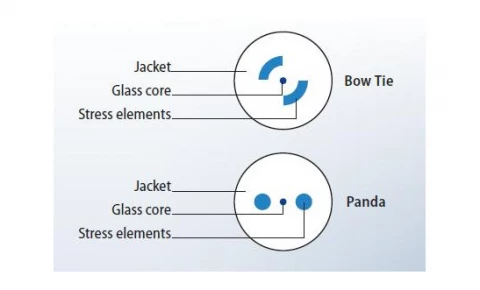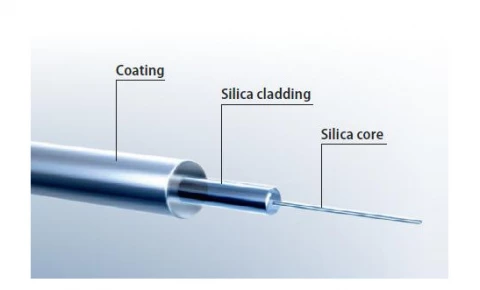Description
Polarization-maintaining fibers are an essential component in advanced optical systems, designed to preserve the polarization state of light as it travels through the fiber. This unique capability is achieved through the integration of stress elements embedded within the fiber's cladding, which induce birefringence in the fiber core. The result is a fiber that can maintain the polarization of light, making it invaluable in precision applications where signal integrity is paramount. The design of these stress elements can vary, offering flexibility in tailoring the fibers for specific needs. Whether utilized in optical networks, pump lasers, or microscopic applications, these fibers provide the reliability and performance necessary for cutting-edge technologies. The fibers are available in various configurations, including the widely recognized Panda and Bow Tie types, each offering distinct advantages depending on the application requirements.
Polarization-maintaining fibers are engineered to perform across a broad range of wavelengths, from the visible spectrum (VIS) to the infrared (IR). This versatility ensures that they can be effectively integrated into a wide array of optical systems. With mode field diameters tailored for specific wavelengths and jacket diameters standardized at 125 µm, these fibers are designed for compatibility and ease of integration. The fibers exhibit exceptional transmission properties, with specific attenuation rates and cut-off wavelengths optimized for different spectral ranges. This ensures minimal signal loss and high fidelity in data transmission, critical for applications demanding precision and accuracy. The numerical aperture of these fibers is carefully calibrated to balance light-gathering ability and resolution, enhancing their performance in diverse environments.
Manufactured with a silica core and acrylate coating, these fibers offer durability and protection against environmental factors. The standard coating diameter is 245 µm, with some variations available to meet specific application needs. For projects requiring additional customization, jacketings and assemblies can be tailored upon request, providing solutions that meet the exacting standards of your optical system. Each fiber type, whether Panda or Bow Tie, is meticulously crafted to deliver optimal performance. With a comprehensive range of order numbers available, selecting the right fiber for your application is straightforward. These polarization-maintaining fibers are a testament to innovation in optical technology, offering the precision and reliability required for today's most demanding applications.
FiberTech Polarization-Maintaining Fiber - 84821003H
Specifications
| Mode Field Diameter: | 4 um |
|---|---|
| Wavelength Range: | 480 – 540 nm |
| Numerical Aperture: | 0.1 |
| Fiber Type: | Panda |
Features
- Polarization Maintaining: Special single-mode fibers designed to maintain the polarization of light, ideal for networks with optical fibers, pump lasers, and microscopic applications.
- Stress Elements: Embedded in the cladding to exert mechanical stresses on the fiber core, leading to birefringence.
- Design Variants: Available in different designs such as Panda and Bow Tie for specific application needs.
- Mode Field Diameter: Ranges from 3.2 μm to 6.6 μm depending on the wavelength, ensuring optimal performance across different applications.
- Jacket Diameter: Uniform 125 µm across most variants, providing consistent handling and installation.
- Wavelength Range: Covers a wide spectrum from 400 nm to 1390 nm, suitable for various optical applications.
- Cut-Off Wavelength: Varies from 365 nm to 1150 nm, tailored to specific transmission properties.
- Attenuation: Low attenuation rates, as low as 2 dB/km at 1300 nm, ensuring efficient light transmission.
- Numerical Aperture: Ranges from 0.10 to 0.16, providing flexibility for different optical setups.
- Coating: Acrylate coating with a diameter of 245 µm or 400 µm, offering protection and durability.
- Customizable: Jacketings and assemblies are available on request to meet specific project requirements.
- Order Numbers: Unique identifiers for easy ordering and inventory management.
Applications
- Network Applications: Polarization-maintaining fibers are essential in optical fiber networks to ensure signal integrity by maintaining the polarization of light.
- Pump Lasers: These fibers are used in pump lasers, which are crucial in amplifying optical signals and improving transmission performance.
- Microscopic Applications: In microscopy, polarization-maintaining fibers help in precise imaging and analysis by preserving the polarization state of light.
- Optical Communication: These fibers are used in optical communication systems for high-speed data transfer with minimal signal loss.
- Laser Systems: Polarization-maintaining fibers are used in laser systems to ensure consistent polarization and improve beam quality.
- Scientific Research: They are utilized in various scientific research applications where precise light polarization is required.
- Sensors: These fibers are used in sensor applications that require stable and accurate polarization measurements.
Frequently Asked Questions
How do stress elements affect polarization-maintaining fibers?
What are polarization-maintaining fibers?
What is the attenuation of polarization-maintaining fibers?
What are the applications of polarization-maintaining fibers?
What is the numerical aperture of polarization-maintaining fibers?
Similar Products
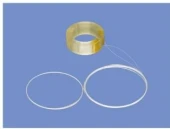
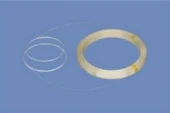


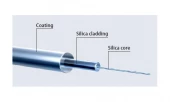
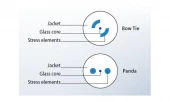
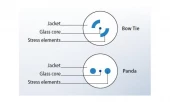
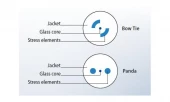
Your inquiry has been received.
Create an account by adding a password
Why create an account?
- Auto-complete inquiry forms
- View and manage all your past messages
- Save products to your favorites
- Close your account anytime — no hassle
